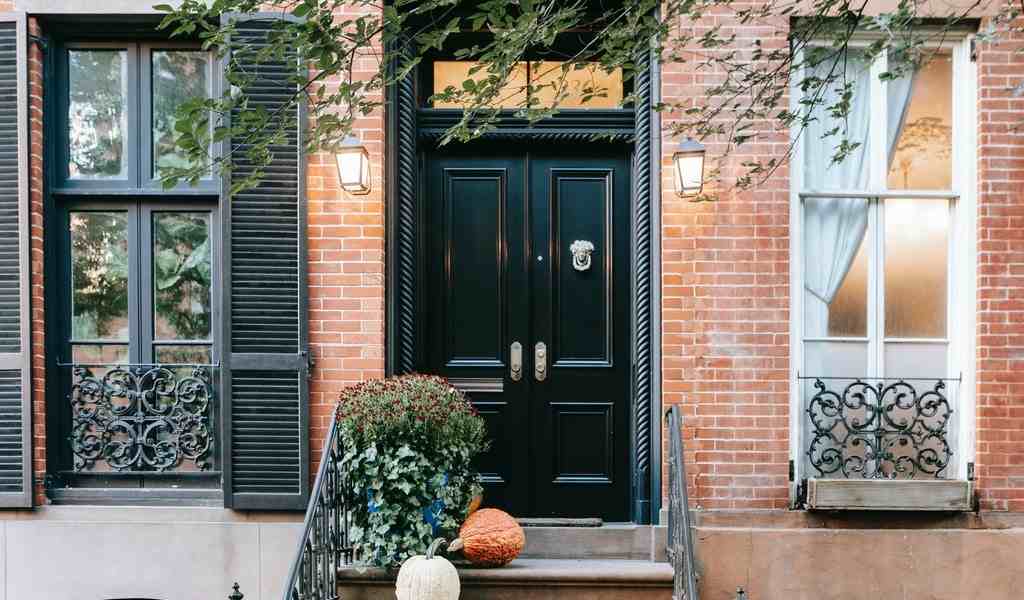Winter months bring weather variations that affect every aspect of everyday living, whether it’s rain, snow, wind, or just frigid temperatures. While we may be quick to modify our wardrobe or home comfort settings in response to Mother Nature’s challenges, one of the best barriers against the weather is often overlooked, which is our doors. Even though your entry doors are built to protect your property from gusty winds and snow, several issues might occur at this time of year. Below is the list of things you should consider to maintain the doors:
1. Sticking
Wooden doors, specifically those constructed of wood fibers, compress as the air becomes colder. They grow as the temperature rises. This expansion and contraction might begin to manifest over time, causing doors to change size and shape. As most doors are made to fit specific door frame widths, any degree of warping might cause a door to catch on the frame. A door that is more difficult to open and close is an example of this. This usually starts at the bottom of the door.
2. Cracking
Although cracking will not have the same long-term functional repercussions as warping, it can significantly impact the aesthetic appeal of your door. The inside paneling and door frame will be very noticeable. Paint loses its elasticity as it loses moisture owing to lower humidity. The paint will shift if the wood beneath the surface begins to expand and compress as well.
3. Fix the loose screws
During the winter months, your door’s screws may become loose. Changes in humidity and temperature, can damage your doors. Your door may not fit squarely within the frame if the screws are loose or the wood sag because of temperature.
4. Sealing
As soon as doors are placed, they begin to settle into a home, and the weather takes its toll just as swiftly. It is critical to keep gaps adequately sealed when it comes to securing your doors. Sealing strips can be used to seal the door’s edges. They are an effective technique to seal gaps between your door and frame, preventing cold air from leaking in. When the door is closed, these soft adhesive strips collapse slightly, pressing to cover any gaps. Stripes give support while maintaining the door’s appearance.
5. Tightening
Loose hinges may appear to be a problem only in older homes. If you see chilly air leaking into your home, check the connections of all doors, regardless of age, to ensure they are as securely linked to the frame as possible. Due to warping and wear, hinges might loosen from the frame over time. Taking a few minutes to fix the hinges is a great preventative measure before the seasons change. One can buy quality product at klarvinduer.no/dorer/ytterdorer.
6. The Upper Corner of Your Door Binds
When your door binds at the upper corner of the jamb, it is because it is pulling down from the top corner at an angle. The door or its frame may expand and shrink as the weather changes, causing it to become stuck. This is true when dealing with an open wood entry door, which provides a slew of maintenance and performance difficulties. Binding doors can also be caused by stripped screws or the door’s weight dragging down on the opposing corner. As the top corners of the door lean forward, the door tilts forward.
7. Insulating
Sealing the doorway helps prevent cold air from getting in, but it is also essential to ensure warm air does not escape. It is necessary to ensure that warm air is not lost by convection with sliding doors, which take up more wall space than other doors. If you install an excluding strip along the bottom of sliding doors or at the base of entryway doors it can protect your doors. It acts as a barrier to prevent warm air from seeping through the lower track or bottom of the door.
Final Thoughts:
Your front door serves as more than just a welcoming entryway to your home or a representation of your style to visitors. It is also a solid barrier that protects you from the windy weather on the opposite side. It is crucial to make sure your door is running correctly and keeping your home safe, much like any other component of our homes.

















